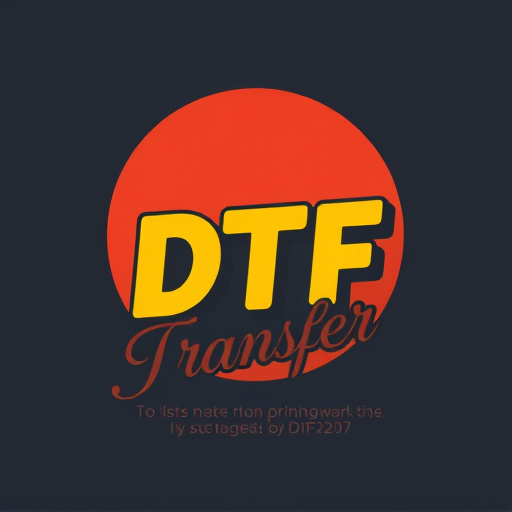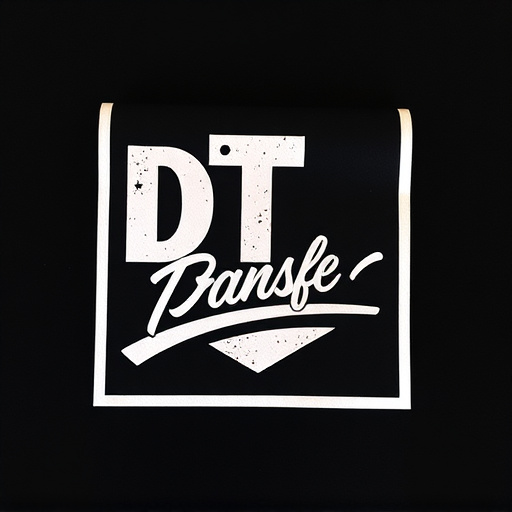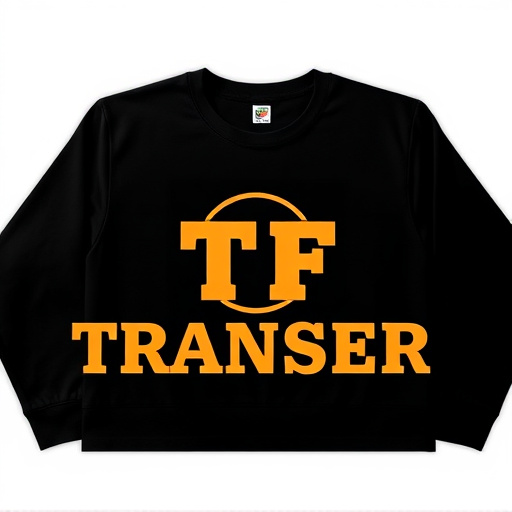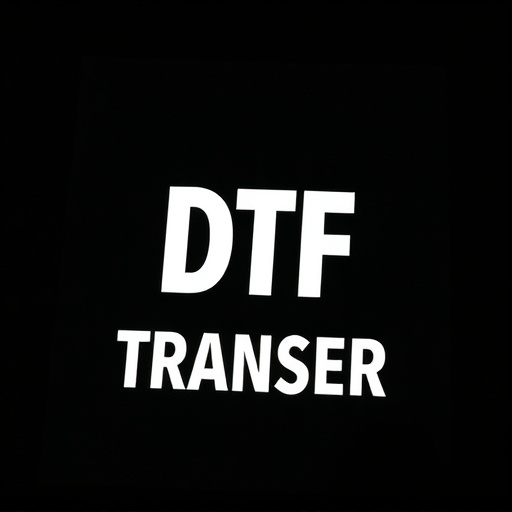Direct-to-film (DTF) printing is a cutting-edge technique offering high-quality results on various film surfaces, revolutionizing industries like graphics, animation, and motion pictures. Specialized materials with advanced coatings ensure vibrant color reproduction and durability against fading or damage, making DTF ideal for outdoor signage and packaging. Choosing the right substrate is key, focusing on ink absorption, surface smoothness, and dimensional stability. DTF technology's benefits include flexibility, efficiency, precision, and quick customization, making it perfect for short-run productions. The future holds promise with innovations in material science, 3D printing, and digital inkjet systems, poised to revolutionize graphic arts, signage, apparel, and decor with cost-effective, eco-friendly production processes.
Direct-to-film (DTF) printing is a cutting-edge technology revolutionizing the way we reproduce images directly onto various substrates. This innovative process demands specialized materials capable of holding ink for crisp, high-quality transfers. In this article, we explore the critical role of unique materials in DTF prints, delving into their properties and benefits. From understanding DTF’s potential to its future innovations, discover how these special substances enhance image reproduction across diverse applications.
- Understanding Direct-to-Film (DTF) Prints: A Brief Overview
- The Role of Specialized Materials in DTF Transfers
- Properties of Ideal Ink-Receptive Substrates
- Material Considerations for High-Quality Image Reproduction
- Applications and Benefits of DTF Technology
- Future Prospects and Innovations in DTF Print Materials
Understanding Direct-to-Film (DTF) Prints: A Brief Overview
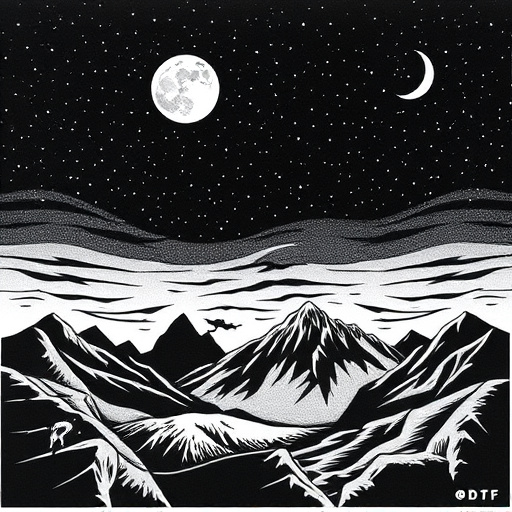
Direct-to-film (DTF) prints represent a cutting-edge technique in the printing industry, offering an innovative approach to achieving high-quality results directly onto various film surfaces. This process eliminates the need for intermediate transfer media, enabling artists and technicians to produce stunning visuals with precise color accuracy. DTF technology has revolutionized many sectors, particularly in graphics, animation, and motion pictures, where detailed and durable prints are essential.
The method involves specialized materials that act as both carrier and ink holder, ensuring a direct interaction between the printhead and the final medium. These materials are designed to withstand the rigors of printing while maintaining their structural integrity, resulting in crisp images and vibrant colors. DTF Prints cater to professionals who demand exceptional quality and efficiency, allowing them to create custom solutions tailored to specific project needs.
The Role of Specialized Materials in DTF Transfers

Specialized materials play a pivotal role in ensuring the quality and efficiency of Direct-to-Film (DTF) prints. These materials, designed specifically for DTF transfers, offer unique properties that traditional printing papers or fabrics cannot match. The primary function is to hold ink effectively, allowing for precise and vibrant color reproduction directly onto various surfaces, from plastic to metal.
The specialized materials are engineered with advanced coatings and adhesives, enabling them to adhere firmly to the substrate while also accepting ink seamlessly. This dual functionality prevents smudging or bleeding during the printing process, resulting in crisp images and precise details on DTF prints. Furthermore, these materials often have a durable finish, protecting the final product from fading or damage, making them ideal for outdoor signage, packaging, and other applications requiring longevity.
Properties of Ideal Ink-Receptive Substrates
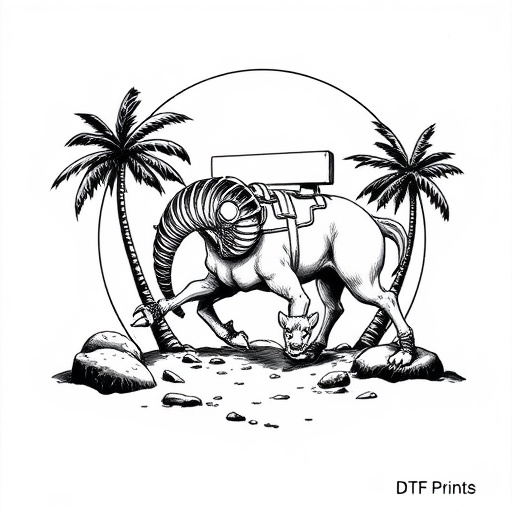
When it comes to direct-to-film (DTF) prints, the substrate’s properties play a pivotal role in ensuring high-quality and durable results. An ideal ink-receptive substrate should possess several key characteristics. First and foremost, it needs to be smooth and free from any rough textures that could interfere with the even distribution of ink during the transfer process. This ensures crisp, clear images without streaks or blotches.
Additionally, the material must have excellent ink absorption properties, allowing the inks to penetrate deeply into the substrate’s fibers. This not only enhances color vibrancy but also improves the longevity of the print by making it resistant to fading and smudging. A robust substrate also offers dimensional stability, preventing any warping or curling that could compromise the integrity of the DTF prints.
Material Considerations for High-Quality Image Reproduction

When creating DTF (Direct-to-Film) prints, choosing the right material is paramount for achieving high-quality image reproduction. The ideal substrate must possess exceptional ink absorption properties to ensure vibrant and accurate color representation. Additionally, it should offer a smooth surface to prevent ink bleeding and ensure sharp details in fine lines and textures.
Specialized materials designed for DTF printing are often coated with synthetic resins or made from advanced polymer blends. These innovative compositions not only facilitate optimal ink adhesion but also provide excellent dimensional stability during the printing process. By selecting materials that meet these criteria, printers can produce visually stunning DTF prints with vibrant colors and exceptional detail fidelity.
Applications and Benefits of DTF Technology
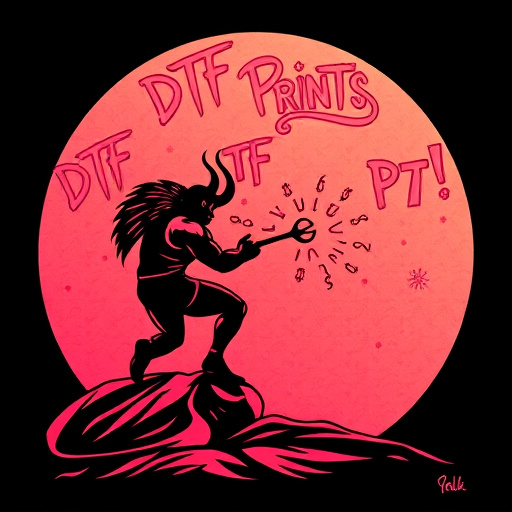
Direct-to-film (DTF) technology has transformed various industries, offering a versatile and efficient method for creating high-quality prints directly on a range of materials. From packaging and signage to textiles and even automotive components, DTF prints have revolutionized the way businesses and artists bring their designs to life. One of its key advantages is the ability to produce vibrant, durable, and precise images without the need for complex set-up processes or specialized equipment.
This technology’s versatility extends to various applications. For instance, in packaging, DTF printing enables quick customization of labels and wrappers, allowing businesses to adapt to changing market demands swiftly. In textiles, it facilitates the creation of unique, personalized clothing and accessories, catering to individual styles. Moreover, DTF’s speed and precision make it ideal for short-run productions, one-off projects, or even on-demand printing, ensuring a cost-effective solution without compromising quality.
Future Prospects and Innovations in DTF Print Materials
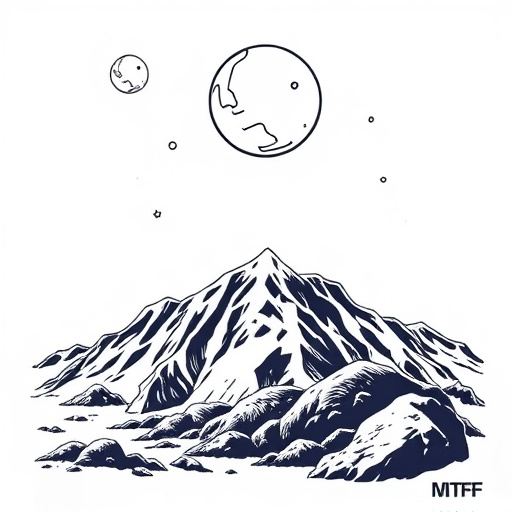
The future of direct-to-film (DTF) print materials looks promising, with continuous innovations aimed at enhancing quality, speed, and versatility. Researchers and manufacturers are exploring new compounds and formulations to create special materials that can hold ink more efficiently, enabling crisp and vibrant DTF prints. The integration of advanced technologies like 3D printing and digital inkjet systems is also on the rise, opening up possibilities for personalized, on-demand production of film transfers.
These developments promise to revolutionize various industries, from graphic arts and signage to apparel and decor. Improved DTF print materials could lead to more cost-effective and environmentally friendly production processes, as well as enable greater design flexibility and speed to market. With ongoing research and investment in this area, we can expect to see even more groundbreaking advancements in the material science behind DTF prints in the years to come.








